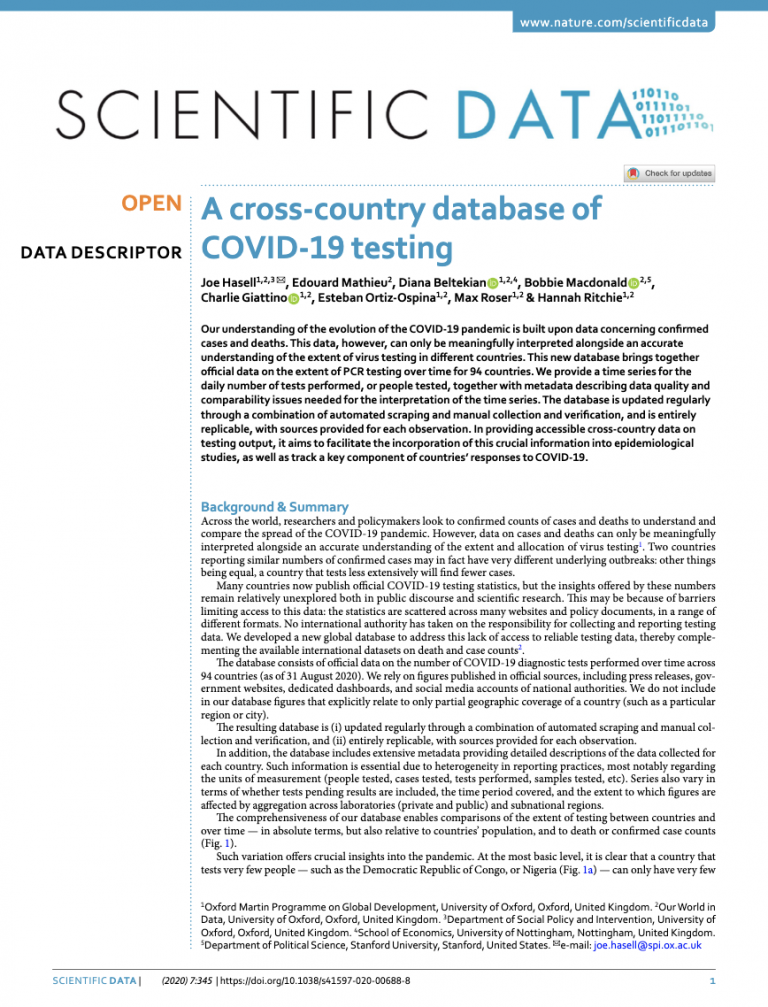We started building our COVID-19 testing dataset over two years ago, in March 2020. At the time, only data on confirmed cases and deaths was available. However, these figures are highly dependent on how much a country has actually tested.
Countries with low testing capacities will miss most cases and therefore fail to give an accurate count of deaths caused by the disease.
This dataset provided essential context for the data on confirmed cases and deaths, as well as insight into the pandemic and how it spread. You can read more about our COVID-19 testing dataset in our paper:
As of 23 June 2022, we will no longer add new data points to our COVID-19 testing dataset. There are several reasons for this.
Firstly, reporting methods have become very different between countries, and the type of tests (PCR, antigen, at-home self-tests) included in the data is increasingly unclear.
Secondly, testing and case confirmation criteria have diverged significantly between countries: the type of test necessary to confirm a case; if a referral from a GP is required for laboratory tests; if laboratory tests are free or subsidized; if at-home self-tests are available; whether vaccination status influences these parameters. These factors have made harmonizing data definitions across countries difficult to sustain.
Furthermore, with very high infection rates since the emergence of the Omicron variant, the main focus of public health authorities has shifted from case metrics to other endpoints, such as hospital and ICU admissions, deaths, and excess mortality (we will continue to collect and publish data on all of these important metrics). As a result, countries have begun to report testing data less frequently.
All historical data collected to date will remain available in our dataset, on our charts, as well as on our testing entry. Future testing data is still available directly from various regional statistical agencies:
- The European CDC continues to report the number of tests performed each week in its member states, including at the subnational level for some countries.
- The Africa CDC maintains a dashboard that reports data related to COVID-19, including the number of tests performed; note that for some countries the data is updated infrequently.
- The WHO Eastern Mediterranean Region also currently maintains a COVID-19 dashboard that reports the number of tests performed in its constituent countries; likewise, the testing data for some countries is updated infrequently.
- The WHO South East Asia Region publishes weekly COVID-19 situational reports, which include the testing positivity rate for each country.
These sources, however, face the same limitations as our dataset in terms of cross-country comparability.
We thank the many readers, researchers, journalists, and government officials, who contributed to this effort since March 2020 by sending us valuable information and useful feedback on our dataset.


